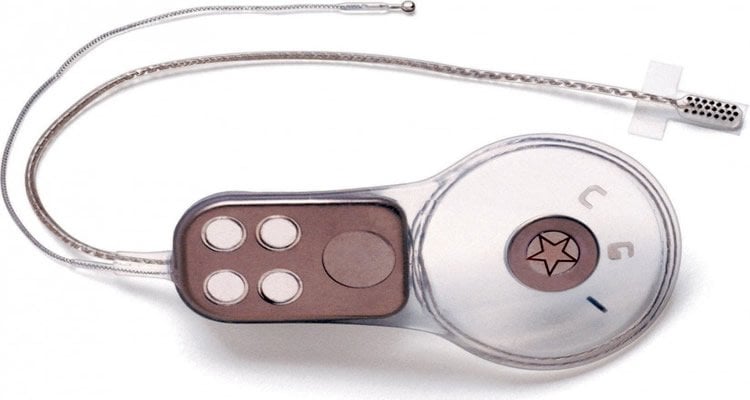Keck School leads studies of auditory implant’s safety in clinical trial backed by the National Institutes of Health.
A multi-institutional team of hearing and communication experts led by the Keck School of Medicine of USC is breaking sound barriers for children born without a hearing nerve in a clinical trial backed by the National Institutes of Health.
Launched in March 2014, the three-year study has enrolled five of 10 participants and successfully implanted an auditory brainstem implant (ABI) device in four children who previously could not hear.
The research team will present preliminary findings at the annual meeting of the American Association for the Advancement of Science in San Jose on Feb. 14.
“Initial activation of the ABI is like a newborn entering the world and hearing for the first time, which means these children will need time to learn to interpret what they are sensing through the device as ‘sound,’ ” said audiologist Laurie Eisenberg, a Keck School of Medicine otolaryngology professor and study co-leader. “All of our study participants whose ABIs have been activated are progressing at expected or better rates. We are optimistic that, with intensive training and family support, these children will eventually be able to talk on the phone.”
Hearing aids and cochlear implants
Hearing loss manifests in various forms, most of which can be partially restored through hearing aids and cochlear implants. Those devices cannot help a small population of individuals who do not have a cochlear, or hearing, nerve — these people are unable to perceive sound, no matter how loud, outside of feeling vibration. The ABI is considered revolutionary because it stimulates neurons directly at the human brainstem, bypassing the inner ear entirely.
Surgeons outside the United States have been doing ABI surgeries in children for more than 10 years, but there was never a formal safety or feasibility study under regulatory oversight.

In the United States, the ABI is approved for use only in patients 12 years or older with neurofibromatosis type II, an inherited disease that causes a non-malignant brain tumor on the hearing nerve, but it has shown limited effectiveness in adults.
Scientists believe that the ABI would be more effective in younger children, when their brains are more adaptable. The clinical trial will attempt to prove that the surgery is safe in young children and allow researchers to study how the brain develops over time and how it learns to hear sound and develop speech.
A ‘last chance to hear’
“Hearing loss can be devastating to a child’s social development, and for some children, the ABI is their last viable chance to hear,” said Keck School of Medicine Professor Robert Shannon, an investigator for the trial and a leading scientist in the development of ABI technology since 1989.
“Several of the young children who had ABIs implanted outside the United States have sought help at the USC-CHLA Center for Childhood Communication, and we know that they now have the potential to understand speech,” he said. “This really shows how powerful and flexible the brain is. By studying how the brain and the hearing system work together through this device, our team will set the gold standard for use of this technology.”
The NIH clinical trial (grant U01DC013031) covers the costs of the device, procedure and subsequent testing. To qualify for participation, patients aged 2 to 5 years old must show that standard treatment such as hearing aids and cochlear implants have been ineffective.
We would like to thank Alison Trinidad for submitting this article to NeuroscienceNews.com.
Contact: Alison Trinidad – USC
Source: USC press release
Image Source: The image is credited to Cochlear and is adapted from the USC press release
Original Research: The research will be presented at the American Association for the Advancement of Science annual conference in San Jose on February 14 2015.






